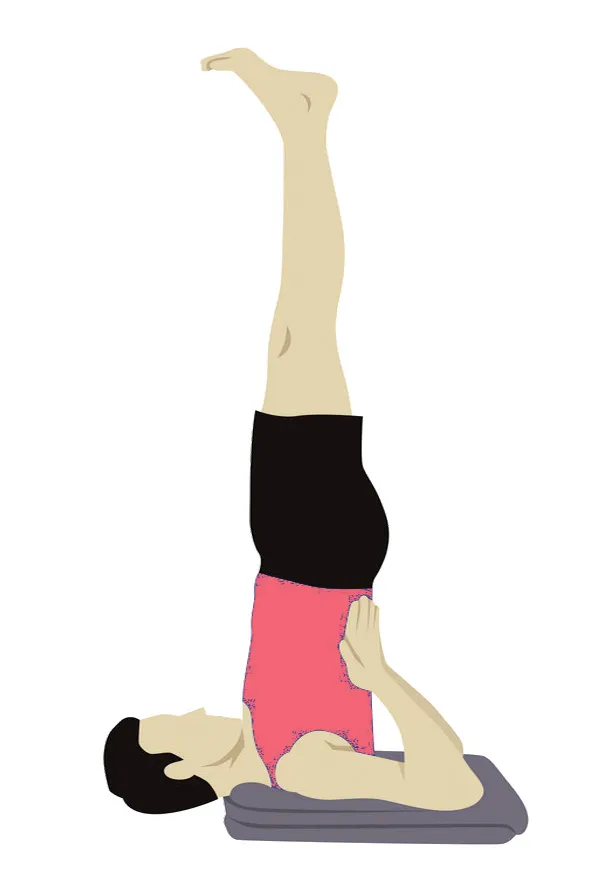Pranayama and yoga in thyroid disorders
On

Dr Ravindranath Das
MBBS, MD, MRCP (UK), FRCP (London)
Since 1995, Pujya Swami Ramdevji Maharaj has been lighting the light of hope not only in different parts of India but all over the world through Pranayam and Yoga practice in the camps held at Patanjali Yogpeeth, Haridwar every day in Param Brahmamuhurta since 1995.
In Sanskrit, the thyroid gland is called (Kanthamani) because it is 4x2x1 cm in front of the throat. Due to the secretion of this 5 gram endocrine gland which looks like a butterfly, every cell of the body from head to toe is able to function properly.
They are made of microscopic cells and every part of the body is made up of these. Life force resides in every living being and that power comes from thyroxine. The energy required for every work comes from food. Thyroxine, a hormone secreted by the thyroid gland, plays an invisible role in every step of these continuous processes. Thyroxine is necessary for heartbeat, respiration, food intake, digestion, absorption and excretion – all these functions.

The thyroid gland produces thyroxine by collecting iodine from salt and various foods and the deficiency of which leads to myxedema and excess of it causes a disease called Graves' disease. Thyroxine helps every cell in every part of the body to perform its specific function.
Then, thyroxine is controlled by the pituitary gland located in the brain, causing TS. H. Hormone is released. If the amount of thyroxine in the blood is higher or lower than normal so various symptoms of myxedema and Graves' disease gradually start appearing in the brain, heart, bones, fat, marrow, hair, skin and male reproductive system.

The level of thyroxine in the blood of a healthy person is 5-2 μg/dL and T.S. The level of H. is 0.4-4.0 IU/ml.
With the help of Yogasana and Pranayama, prevention and treatment of diseases like myxedema and Graves' disease is possible. Among the asanas, Sarvangasana, Matsasana and Halasana are the most effective. Besides, asanas that tilt the head and neck back such as Suryanamaskara, Pavanmuktasana, Yoga Mudra, Suptavajrasana etc. are also beneficial.
Apart from Anulom-Vilom and Kapalbhati, one of the beneficial pranayam for thyroid is 'Ujjayi'.
Practicing these pranayams and yogasanas can prevent or cure thyroid related diseases by stimulating the sympathetic and parasympathetic nervous system and endocrine glands of the neck besides increasing blood circulation to all organs. If sympathetic is aggressive, parasympathetic is defensive. In this way balance is maintained in the body.
The vagus or parasympathetic nerve plays an important role in slowing the heart and breathing, reducing blood pressure, and in digestion and metabolism.
That is why this nadi is called Satvik in Ayurveda. Hatha yogis are able to remain underground for long periods of time by controlling this parasympathetic nerve.
The Sanskrit word Ujjayi (ud + ji) literally means 'winner'. 'Ji' means victory and 'Ud' means bondage. That is, one has to overcome the bondages and become victorious.
In such Pranayama (Prana + Ayama) 'Prana' means breath and 'Ayama' means control. In Ujjayi Pranayama, inhale forcefully through the nose (puraka), contract the throat muscles, focus the mind on the throat, open the door of the glottis in the vocal tract and exhale forcefully through the nose like a roar with intensity similar to the roar of the ocean. (Laxative).
In this pranayama, the muscles called diaphragm between the chest and abdomen, which are controlled by parasympathetic nerves, also help in inhalation and exhalation. In modern times, the prevalence of thyroid related diseases is increasing. Toxic sewage, manure and microscopic electromagnetic radiation used to increase fertility have been attributed to this. Prevention is always better than cure. Therefore, myxedema patients are prohibited from eating cauliflower, broccoli, rangalu and soybean. Because those vegetables contain various types of thyroid poisons like thiocyanate, glucosinolate etc., which do not allow the production of thyroxine. Ayurveda includes yoga pranayama, lifestyle and dietary changes as well as the use of herbs. Hence Patanjali's Divya Thyrogrit has proven to be very beneficial in thyroid disorders, especially myxedema.
लेखक
Related Posts
Latest News
01 Dec 2024 18:59:48
योग प्रज्ञा योग - योग जीवन का प्रयोजन, उपयोगिता, उपलब्धि, साधन-साधना-साध्य, सिद्धान्त, कत्र्तव्य, मंतव्य, गंतव्य, लक्ष्य, संकल्प, सिद्धि, कर्म धर्म,...








.jpg)




